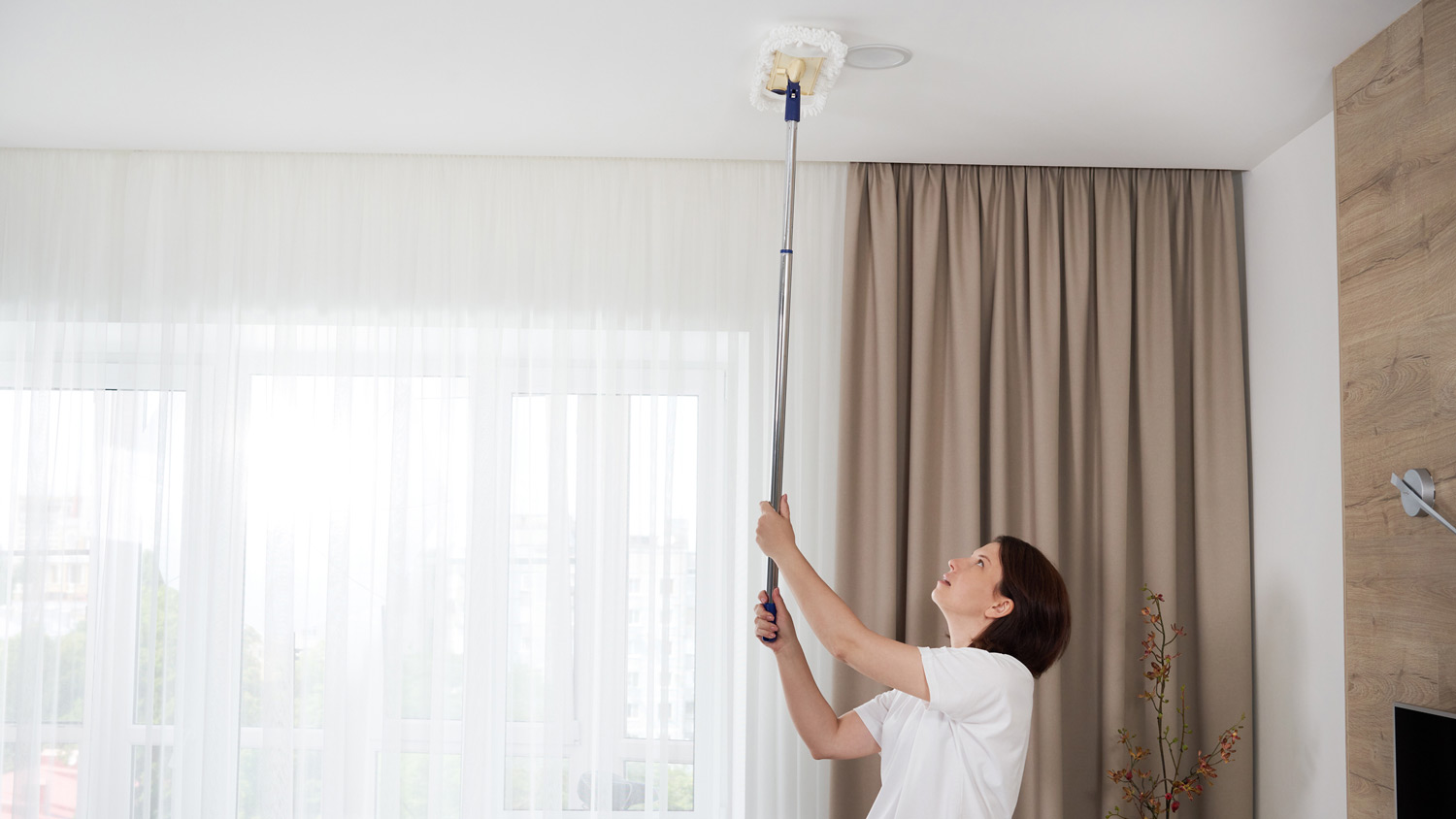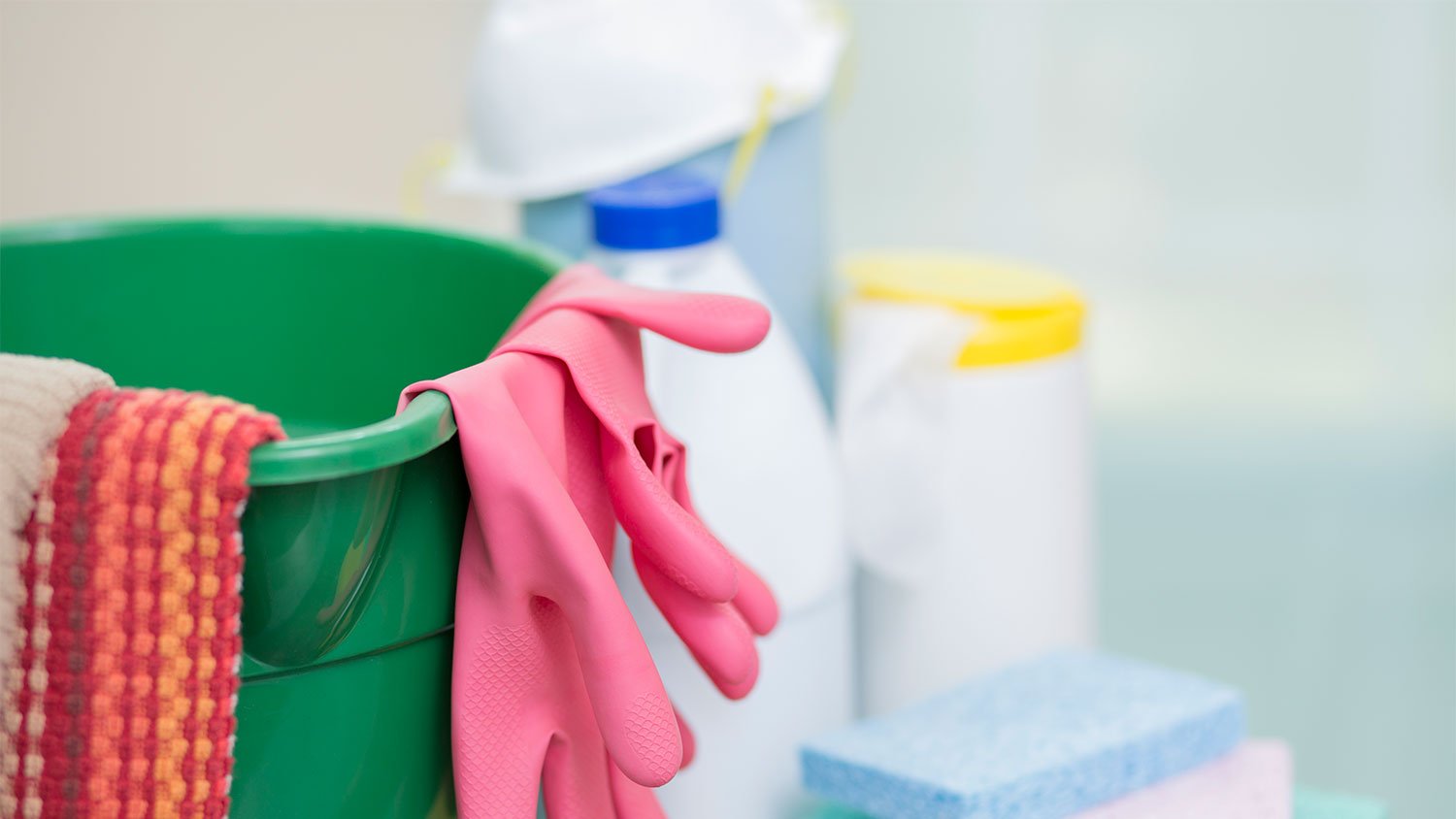
Discover the average acoustic ceiling cleaning cost, what affects pricing, and how to save. Get expert tips to budget for your acoustic ceiling cleaning project.
When your feline friend has an accident, you don’t have to live with the stinky smell


Professionals can detect hard-to-find urine spots using tools such as UV lights and moisture meters, ensuring that no odor-causing residue is left behind.
Cat urine can seep deeply into carpets, insulation, or even wallpaper; only a professional can effectively remove every last spot.
A pro will have access to specialized enzyme-based or professional-grade treatments that break down odor-causing compounds at the source.
DIY urine cleaning attempts are a great way to address issues in the moment, but at-home remedies will almost always leave behind residual odors.
Going straight to the professionals will save you time and money by avoiding repeat cleanings.
Fluffy, who has been reliably peeing in her litter box since she was a wee kitten, has suddenly urinated on your pricey new couch, and the smell has quickly taken over the living room. Cats may stop using the litter box for many reasons, from disliking a new litter you’ve purchased to introducing a new puppy to the house to serious underlying health issues.
Figuring out why your cat is not peeing in the litter box is important in ensuring your house doesn’t smell like cat urine. But it’s also crucial to know how to get rid of cat pee smells in your home. We’ll cover both so you can get back to living in perfect harmony.
Cat pee is concentrated and contains urea, uric acid, creatinine, electrolytes, pheromones, and bacteria. As bacteria breaks down the urea, it releases ammonia, which is why cat urine often seems so much stronger and smellier than dog pee. As cats age, experience health issues, or begin marking, the urine can become even more potent.

The key to eliminating cat odors is to tackle the stain as soon as possible. The easiest way to do this is to stock a caddy with cleaning agents, so you can grab it and clean up the pee soon after it happens.
Baking soda: You use baking soda to neutralize fridge odors, so don’t overlook this powerful cleaning agent for soaking up odors from cat urine, too.
Vinegar: Vinegar can neutralize the bacteria in cat pee on carpets and other soft surfaces to help control odors.
Floor cleaner: For hard floors, you can use floor cleaner after wiping up any cat urine.
Enzymatic cleaner: Enzymatic cleaners break down stains and odors.
Paper towels or cleaning cloths: Keep these stocked in the caddy to wipe up wet spots as quickly as possible.
Gloves: Gloves offer added protection when cleaning up cat pee, especially if you are using strong cleaners.
Face mask: Particularly strong urine releases ammonia, and you may want to wear a mask to protect yourself.
Note: While you can use ammonia for some cleaning tasks, you don’t want to use it to clean up cat urine. Not only can it set in the stain, but ammonia is also a component of cat pee, so if cats smell the ammonia cleaner, they’ll be more inclined to pee again where you sprayed it.
With your well-stocked cleaning caddy in tow, there’s no cat odor you can’t handle. The first step, no matter where your cat has claimed as a potty, is to wipe up the fresh urine as soon as possible. The longer the urine sits, the stronger the smell will become and the harder it is to remove.

Your furniture is not doomed if your cat has an accident. You can use an enzymatic cleaner to clean the furniture yourself by following the label instructions. Otherwise, apply baking soda or vinegar to the stain, letting either product sit for at least 30 minutes. Vacuum up the baking soda or blot the vinegar with a clean cloth.
Carpet can hold odors for a long time, so you’ll need cleaning agents like baking soda, vinegar, and enzymatic cleaners that can break down the stain and odors effectively.
Soak up the urine with paper towels or cleaning cloths.
Spray the stain with an enzymatic cleaner, following the label instructions.
Pour baking soda on the stain, then add vinegar.
Let the baking soda and vinegar sit for 30 minutes to 24 hours.
Vacuum the area.
Hard floors aren’t going to hold smells the way carpets and soft fabrics will, but you still want to clean up the mess quickly before the smell of ammonia fills the air. Wipe up the urine with paper towels or cleaning cloths. Then, use a floor cleaner suitable for your type of hard flooring to clean the area. Wipe the area once more with a clean, dry paper towel or cloth.
When your cat has an accident on a mattress, it can be stressful for all the humans and furry friends involved. Now, you need to get the mess cleaned up, and eliminate the odor so you can sleep soundly. To remove cat urine and its potent odor from a mattress:
Blot the area with a cold, damp cleaning cloth.
Spray the stain and the surrounding area with an enzymatic cleaner, and let the cleaner sit for about 15 minutes.
Blot the area again with clean, dry towels.
Cover the stain with a towel as it dries.
Swap out the towel daily until the mattress completely dries.
Note: Cats may be tempted to relieve themselves in the same spot again if they can smell the urine odor, so cover the mattress with a tarp while it is drying to discourage this behavior.
Your habit of tossing clothing onto a chair or the floor of your bedroom can be an issue if your cat has an accident in the area. But if Fluffy does pee on your favorite sweatshirt, you can still get rid of the lingering scent.
Use paper towels to soak up as much of the urine as possible.
Pre-treat the clothing with an enzymatic cleaner, letting it soak for about 10 minutes.
Add 1 cup of distilled white vinegar, or add enzymatic laundry detergent, to a load of laundry, then wash as usual.
Give the load a smell test before throwing it in the dryer. Smells can really set in with the heat. Hang dry the laundry if possible.
If the smell test reveals that the odor is still there, repeat the process.
The ammonia released from cat pee can overpower the entire home. Cleaning the affected area is the best way to get rid of the smell and should be effective within just a few hours. But if there’s still a lingering odor in the air, open windows and consider setting up an air purifier with activated carbon filters. If you still can’t get rid of the smell, hire a local cleaning service to help get rid of the cat urine odor for good.
Cleaning up the cat urine yourself typically costs less than $25 for items like enzymatic cleaners or floor cleaners if you don’t have them already. But if you can’t find the source of the odor or don’t feel confident you can thoroughly clean the stains, you may want to make a call for help. Hiring a house cleaner costs about $30 to $50 per hour. If you hire a pro, you’ll want to mention the type of mess they’ll be up against so they can come prepared.
For potent odors in your carpets, you may need to opt for a deeper clean. Hiring a professional carpet cleaner costs about $120 to $230 for a standard service, while steam cleaning costs around $300 and carpet shampooing costs around $240. To deep-clean carpets yourself, you’ll spend about $75 to rent a steamer and buy carpet detergent, plus you’ll need to spend a few hours of your time.
If you’ve moved into a home with old pet stains on the carpets, you could be looking at a complete refresh on the carpets. Removing the old carpet will cost about $1 to $1.50 per square foot, while installing a new carpet will cost about $3 to $11 per square foot. While you may be able to save around $0.50 to $1 per square foot by DIYing carpet replacement, this is a job best reserved for the pros or those with experience.
From average costs to expert advice, get all the answers you need to get your job done.

Discover the average acoustic ceiling cleaning cost, what affects pricing, and how to save. Get expert tips to budget for your acoustic ceiling cleaning project.

Cleanout cost may be one of your first thoughts when left in charge of an estate. We walk through factors to expect, the professional estate cleanout services cost, and ways to save.

Tile and grout cleaning brings your tiled rooms back to life. In this guide, find out the details of how much it costs to hire tile and grout cleaners.

Cleaning your stove’s exhaust hood may have never occurred to you. Here’s how to clean your range hood to remove the grease and grime so it sparkles.

If your central vacuum is underperforming, you might have a clog. Learn how to unclog a central vacuum system quickly to keep your house dust- and debris-free.

Learn how often you should vacuum your flooring to extend its longevity and reduce the number of contaminants and allergens you’re exposed to.